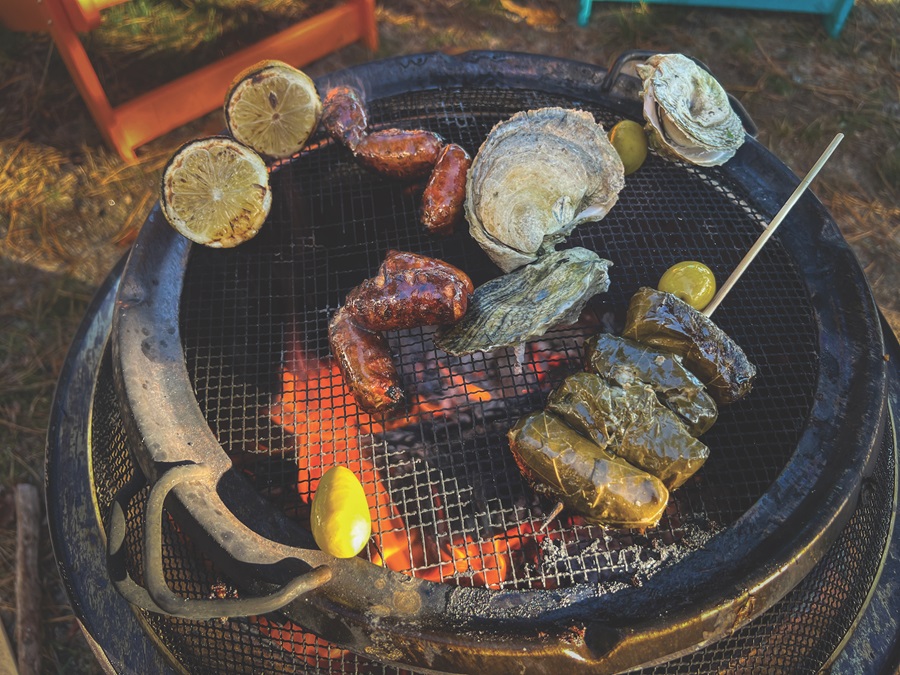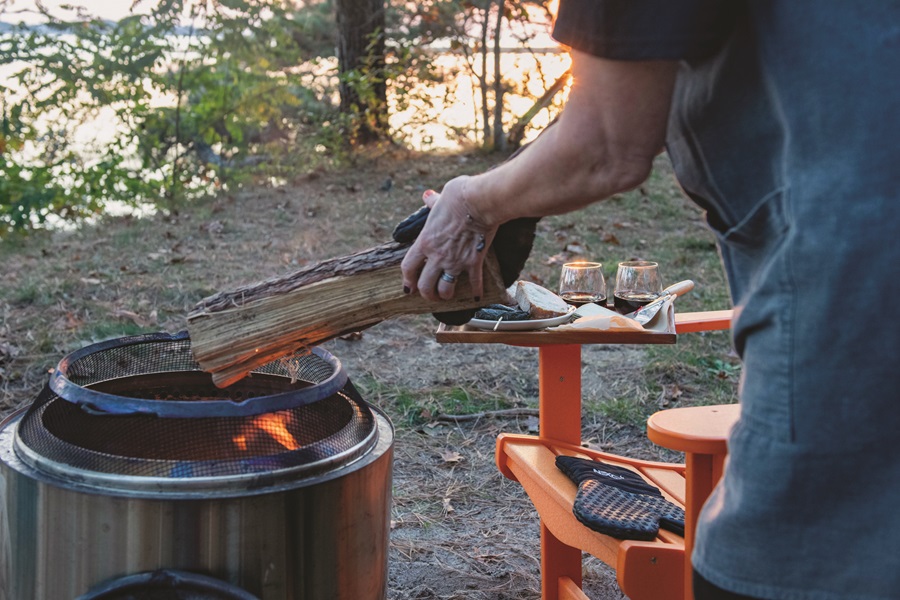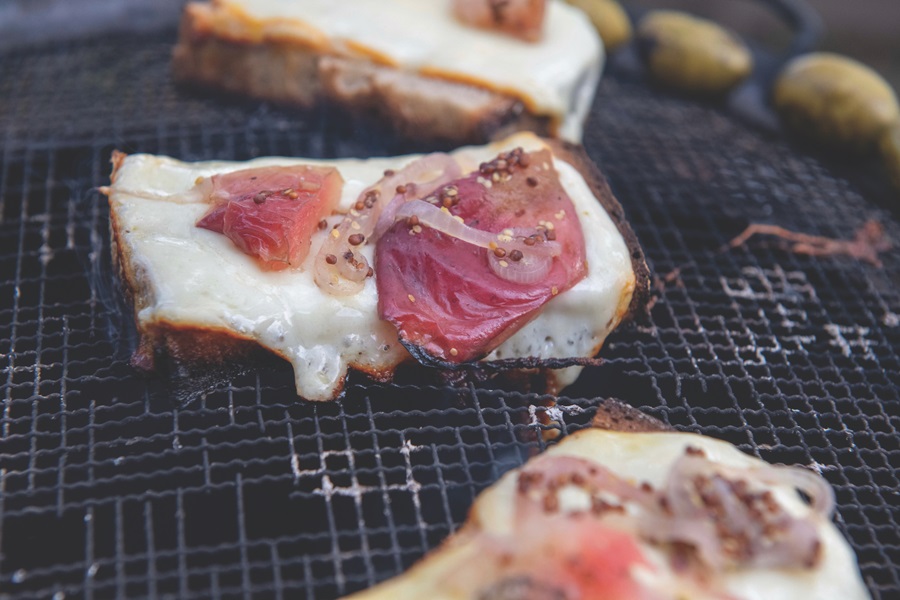As a young cook, I was drawn to vintage preindustrial cookbooks hoping to unlock past wisdom. I was often dissatisfied: the recipes were vague, too simple, kind of bland. Where was the magic of those times? Then I realized that all those foods were being cooked with live flames and embers. The magic was fire.

Sitting by a fire, staring into the flames and sharing warmth, stories are told, and songs are sung. Fire is elemental. In it there is peace and power, comfort and danger. I feel the same way humans have throughout history: when I see fire, I want to seize it for cooking. Francis Mallman, the Argentinian master of live fire cooking, describes its pull this way in his 2009 book, Seven Fires: “Fire has its own language, spoken in the realm of heat, hunger, and desire. It speaks of alchemy, mystery, and above all, possibility.”
There are grand traditions in this genre: local indigenous clambakes over embers buried in a pit is one. But there are less arduous ways to take to the flame.
When we first lit up our wood-fire pit for an end-of-day wine and cheese, everything ended up taking a turn over the embers. Some of our experiments were incinerated failures, others delicious discoveries. Ho-hum olives placed by the fire’s edge were transformed by the heat and char. Stuffed grape leaves tasted way better browned and crisped. Slices of day-old bread were revived by the fire plus a once-over with cut garlic cloves, a rubbing with a cut tomato, and a drizzle of extra-virgin olive oil in the Spanish tradition. These tapas-like improvisations led us to add small chorizo sausages to the grill.

We’ve learned to let the embers serve for later meals, too. A whole eggplant roasted over a subsiding fire is the start of smoky baba ghanoush, a fabulous addition to mashed potatoes, or a classic in tomato sauce for pasta.
Cooking this way is never the same from one time to the next. The wood and the wind give each fire its own character. But taming the fire as it peaks and wanes is both playful and centering. Respect its heat with some basic equipment: long tongs and spatulas and fire-resistant gloves, and you are ready to go.
Trust your primal instincts. Placing our foraged Wellfleet oysters on the fire grate was inevitable but somehow also astonishing. The heat coaxes the bivalves open, and the smoke flavors the oysters’ bubbling liquor. I pull my oyster off the heat just as the liquor hints at bubbling at the shell’s edges — it will be warmed and just cooked. Of course, lemons get charred before they’re squeezed over the oysters or become a smoky accent to drinks.

Fire-grilled cheese is both basic and next level. Heating a cast-iron skillet over the hottest flames is one way to avoid incinerating the bread — controlling the burn is part of the learning curve. But when the fire subsides to grayish embers, you can set the bread directly on the grate to toast it, then top it with a favorite cheese. Grocery store muenster, the proto-melty cheese, oozes amiably in the heat. Staying with a tapas theme would be Manchego. I have even warmed slabs of Greek haloumi cheese directly on my fire to confirm it as the true grill-able cheese.
Another way to temper the heat is to cook things in a foil package. Baby potatoes combined with bacon, garlic, and a splash of wine wrapped in a foil pouch can be tucked into the embers to roast.
Here is one of my favorite complements to smoky grilled cheese: apple wedges tossed with sliced onions, whole-grain mustard, and a bit of wine and cooked until tender. Making these doesn’t hold me in the kitchen for long. I want to get to the fire, and I trust it will do most of the work for me.

Savory Fire-Roasted Apples
2 firm cooking apples, such as Cortland, Honeycrisp, or Golden Delicious
½ onion, very thinly sliced
1 heaping Tbsp. whole-grain mustard
A splash of wine, brandy, rye, bourbon, or cider
Kosher salt and freshly ground pepper
1 Tbsp. butter
- Cut the apples into wedges, trimming off the core but leaving the skin on.
- Lay a large sheet of heavy-duty foil (or a double layer of ordinary foil) on your work surface. Place the apple wedges and onion slices in the center of the foil and toss them with the mustard, wine, salt, and pepper. Dot with butter.
- Bring the short ends of the foil together and fold to seal; fold in the sides and seal them, leaving a little room for steam to escape.
- Place the foil bundle on the grate or next to a moderate fire. Cook, turning the package a few times to get even heat, until the apples and onions soften, about 15 minutes, depending on your fire.
